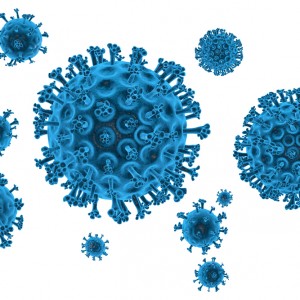 |
| Image Source: lungdiseasenews.com |
Researchers from the Weill Cornell Medical College and New York-Presbyterian Hospital in New York recently discussed the role of autophagy in lung diseases in a study titled “Autophagy in lung disease pathogenesis and therapeutics,” recently published in the journal Redox Biology.
Autophagy is a physiological process that deals with the destruction of cells in the body. It helps maintain homeostasis or normal functioning by protein degradation and turnover of destroyed cell organelles for new cell formation. In the most common form of autophagy, cytosolic materials (the fluid component of cytoplasma) are sequestered into double-membrane compartments called autophagosomes, which subsequently fuse to lysosomes where their contents are enzymatically degraded.
Recently, autophagy gained attention in human pulmonary diseases, both as a modulator of pathogenesis and as a potential therapeutic target. Studies suggest that the autophagic clearance of mitochondria, a potentially protective program, may worsen the chronic obstructive pulmonary disease by activating cell death programs.
In the review, researchers and coauthors Setfan Ryter and Augustine Choi stated that autophagic clearance of cilia components could contribute to airway dysfunction in chronic lung diseases. In certain diseases such as pulmonary hypertension, autophagy may offer protection by modulating proliferation and cell death. In other disorders, such as idiopathic pulmonary fibrosis and cystic fibrosis, impaired autophagy may contribute to pathogenesis.
The authors point out the multiple functions of autophagy and its selective autophagy subtypes may be of significance to the pathogenesis of human disease, with an emphasis on lung disease and therapeutics. In chronic obstructive pulmonary disease (COPD) for example, autophagy modulation can be observed in lung macrophages, bronchial and epithelial cells upon CS exposure and in the lungs of COPD patients, with recent studies suggesting that autophagy promotes lung epithelial cell death, airway dysfunction, and emphysema in response to CS exposure in vivo.
In certain diseases such as sepsis, autophagy may provide a pro-survival advantage by promoting bacterial clearance, and by modulating inflammation. In cigarette smoke exposure models, evidence showed an amplification of disease process when autophagy or mitophagy is activated. Currently, compounds that can modulate autophagy include the mTOR inhibitor rapamycin (an inducer of autophagy) and chloroquine or hydroxychloroquine (inhibitors of autophagy).
As the authors discussed in their review, autophagy has the ability to cause contrasting effects, indicating that a complete understanding of the pathogenic process and the impact of autophagy would be prudent before attempting to modulate autophagy in the context of human disease.
Lastly, a better understanding of the multiple pathways of selective autophagy and their impact on disease pathogenesis may also facilitate the design of more specific therapies for the treatment of pulmonary diseases, and other related diseases where autophagy may contribute to pathogenesis.
Dr. Lisa Marie Cannon focuses on diagnosting and treating patients with sleep disorders. Visit this blog for related articles and news.